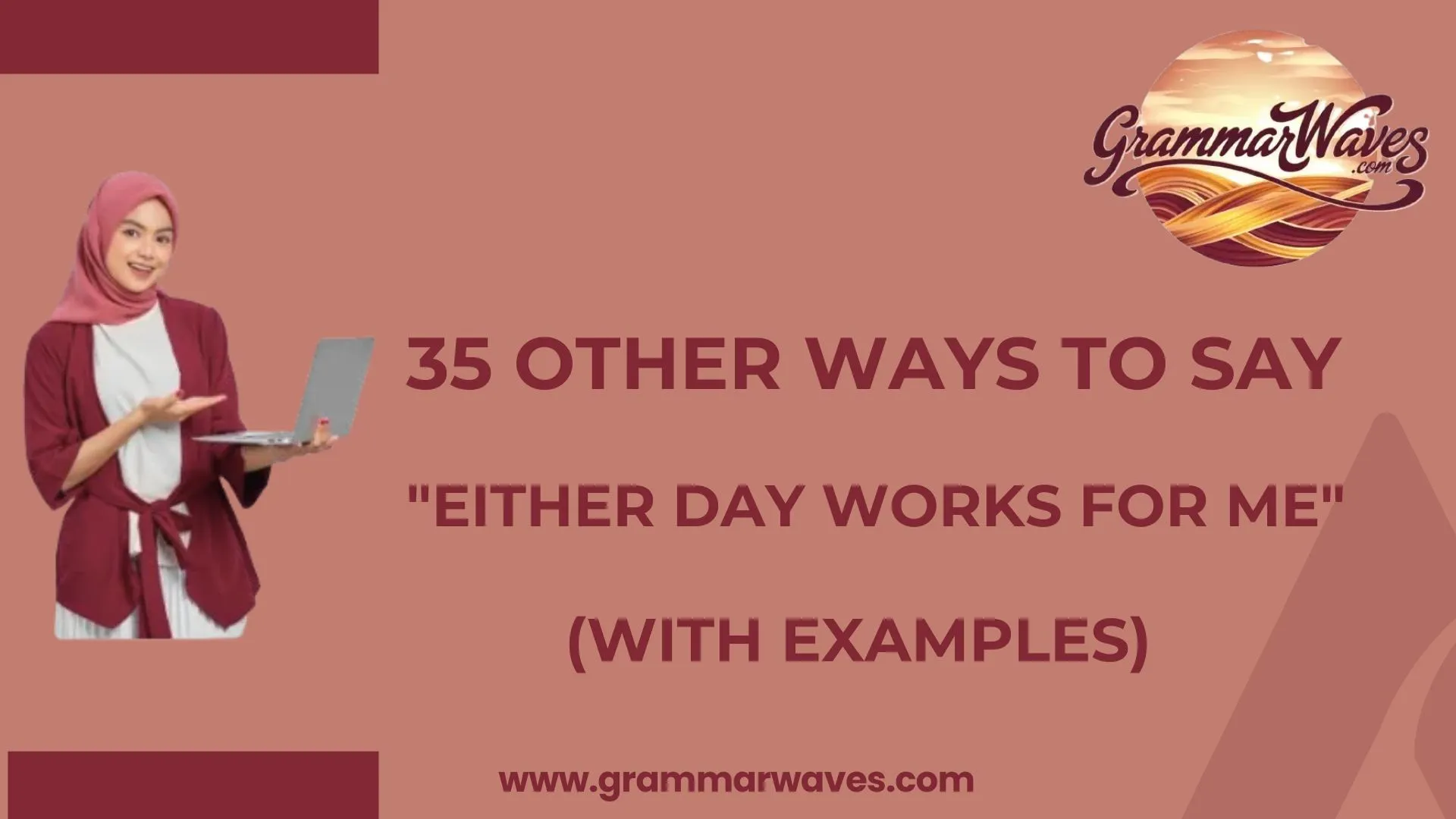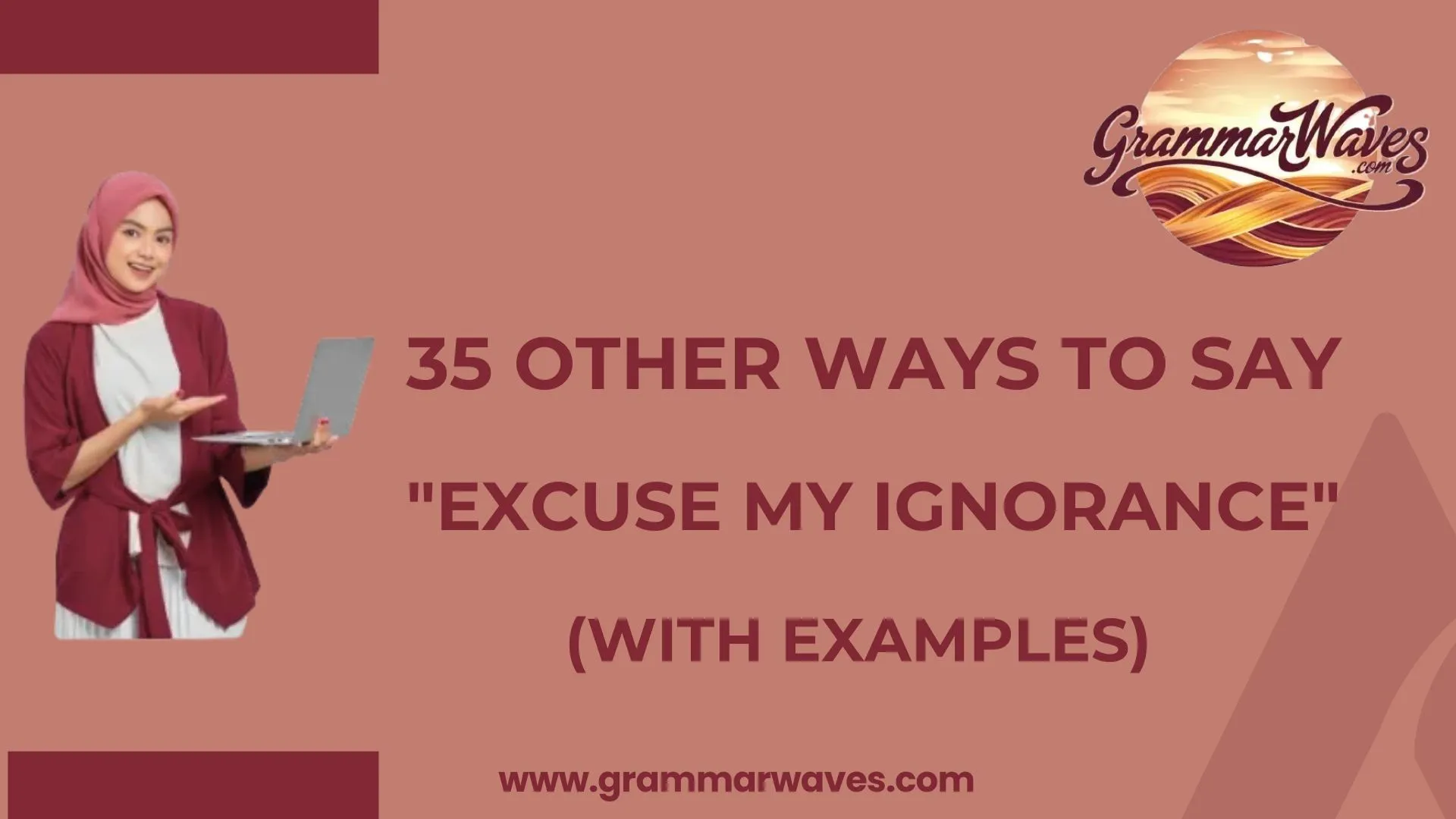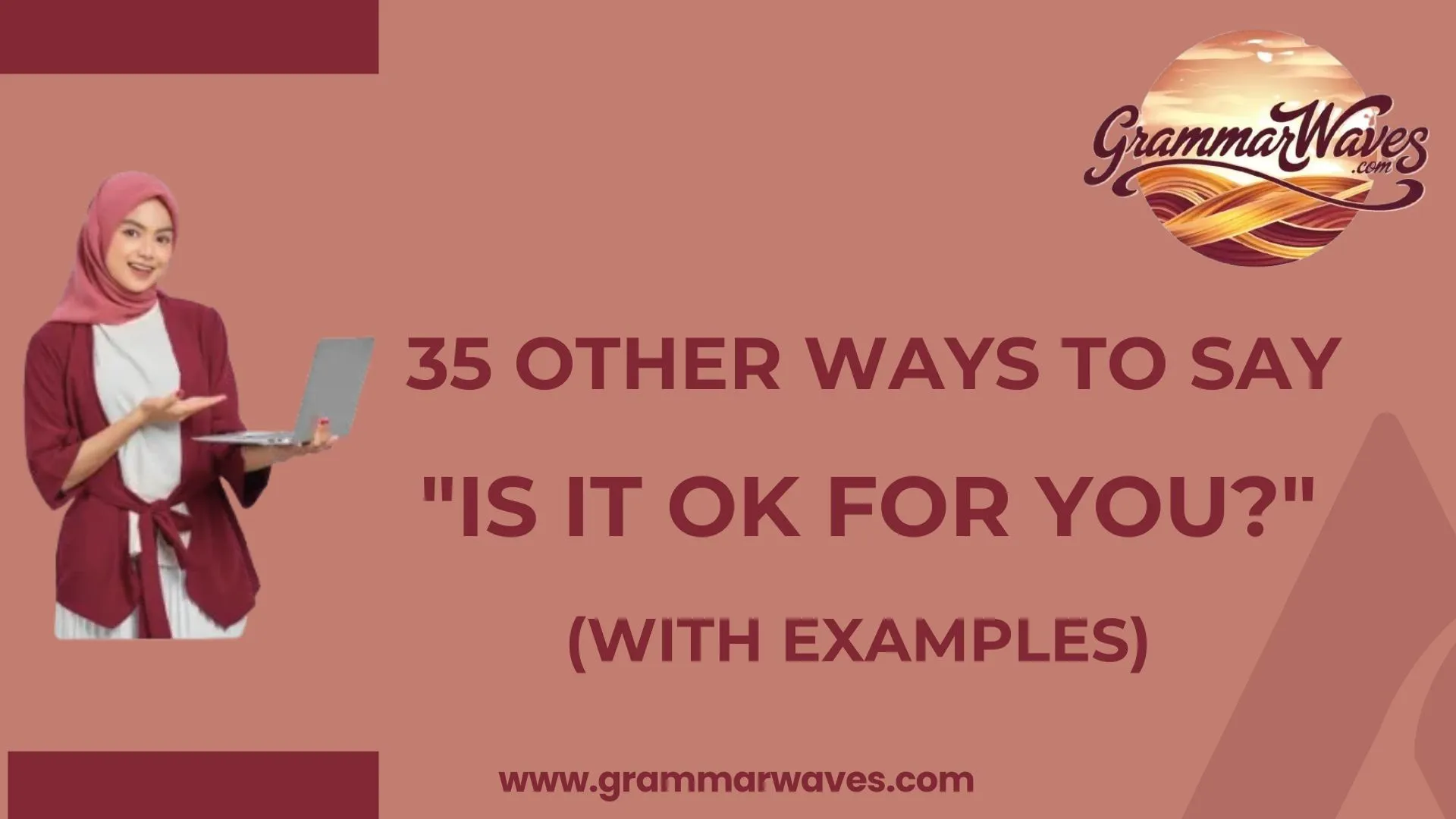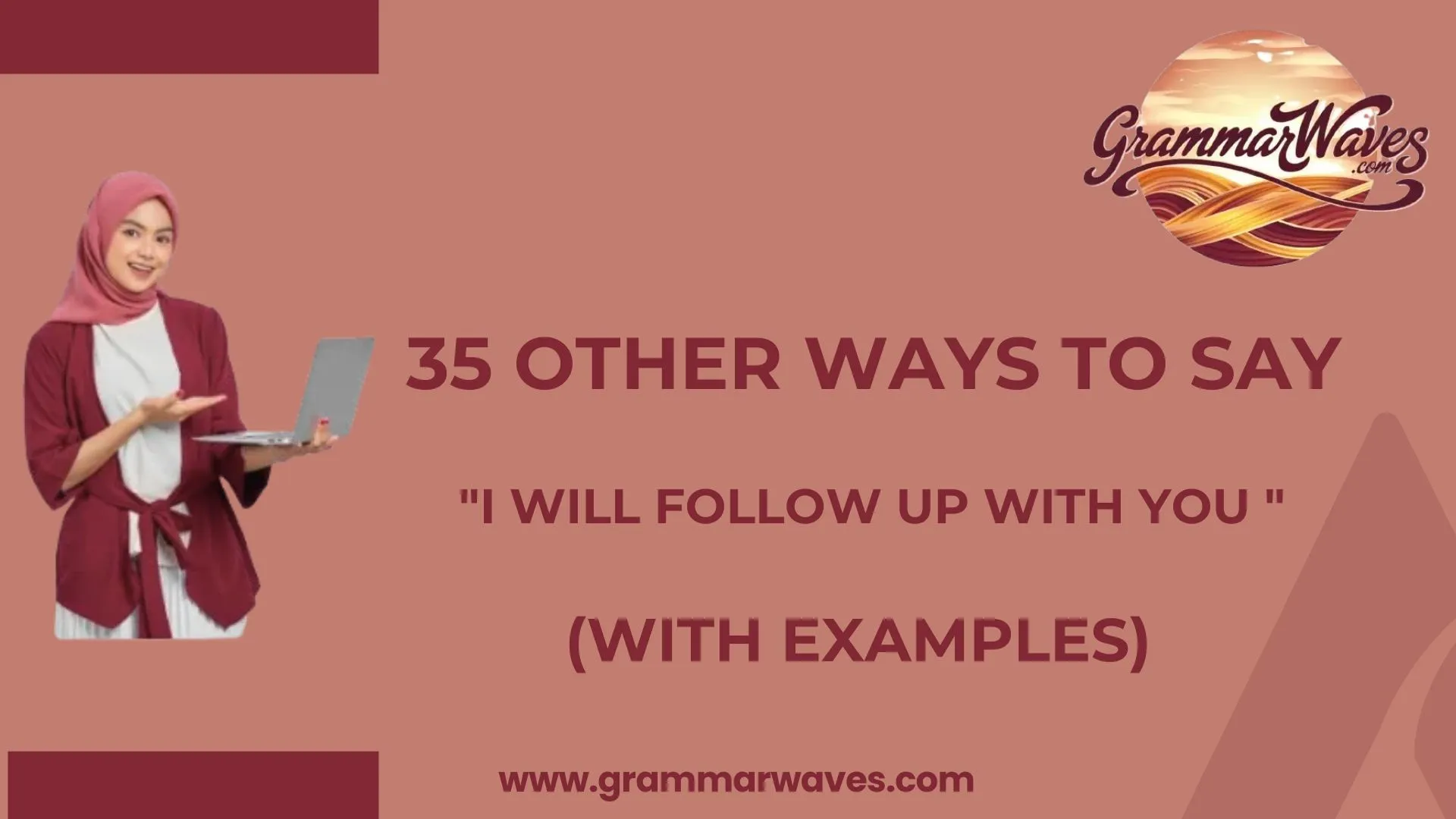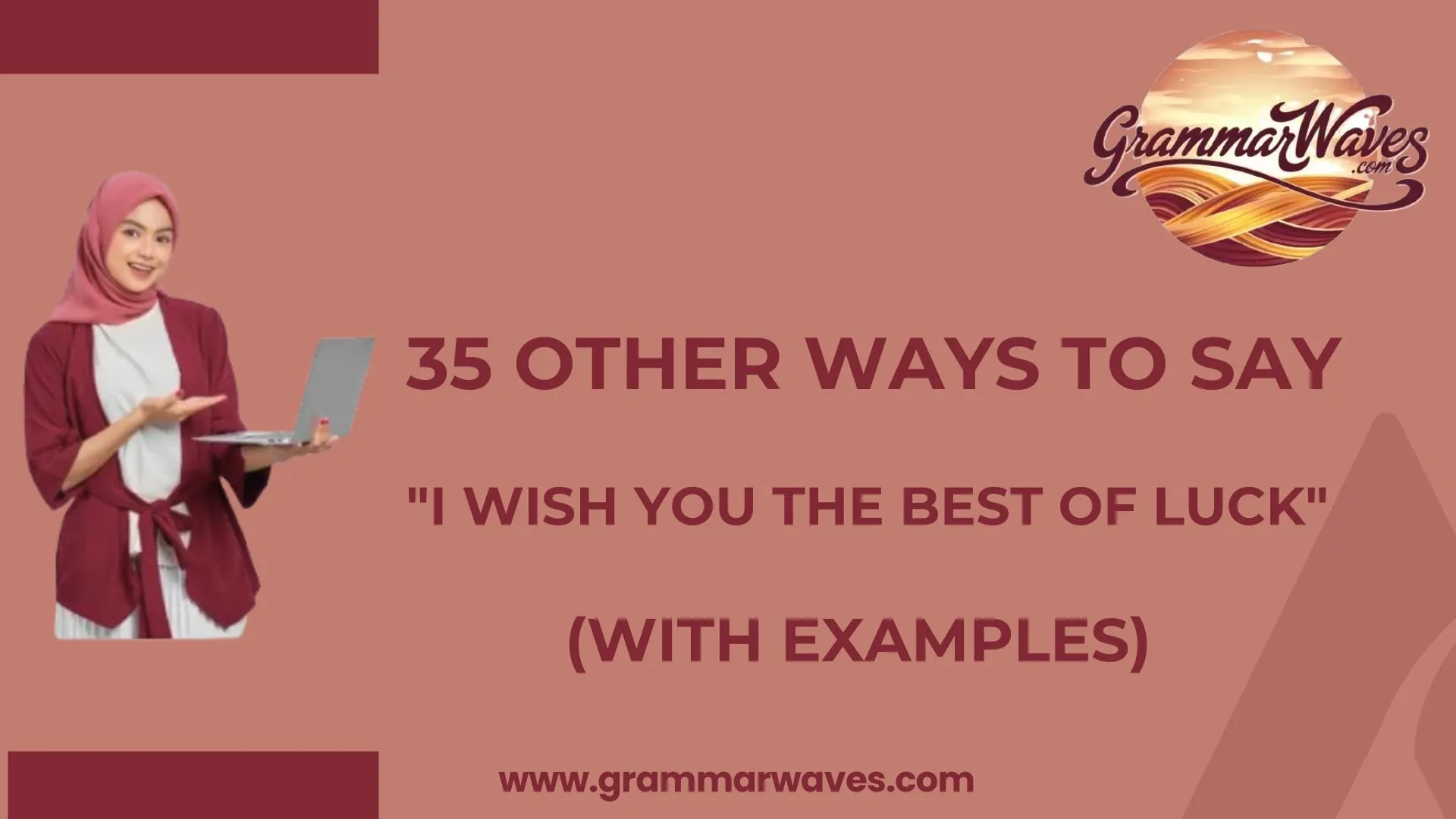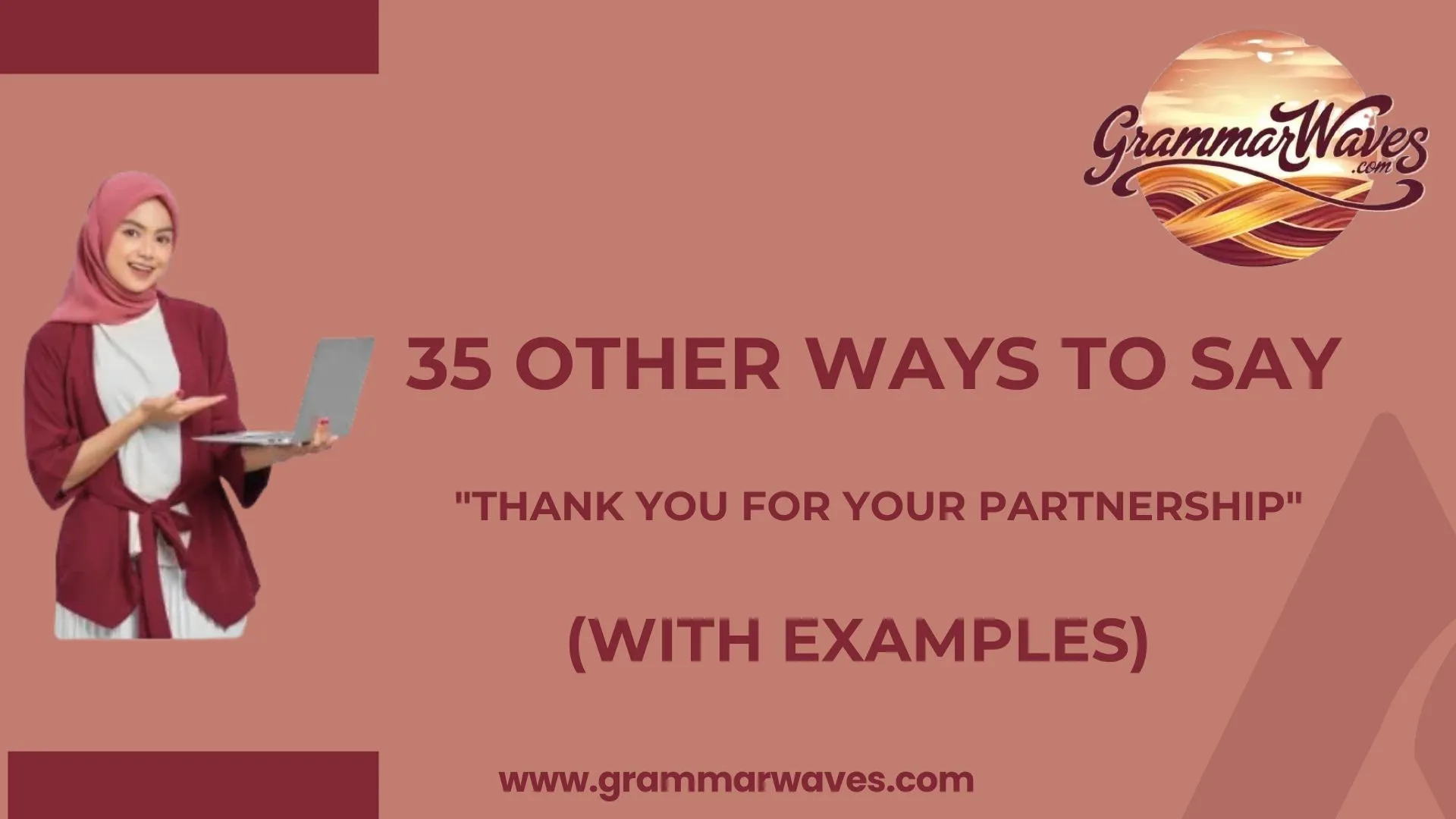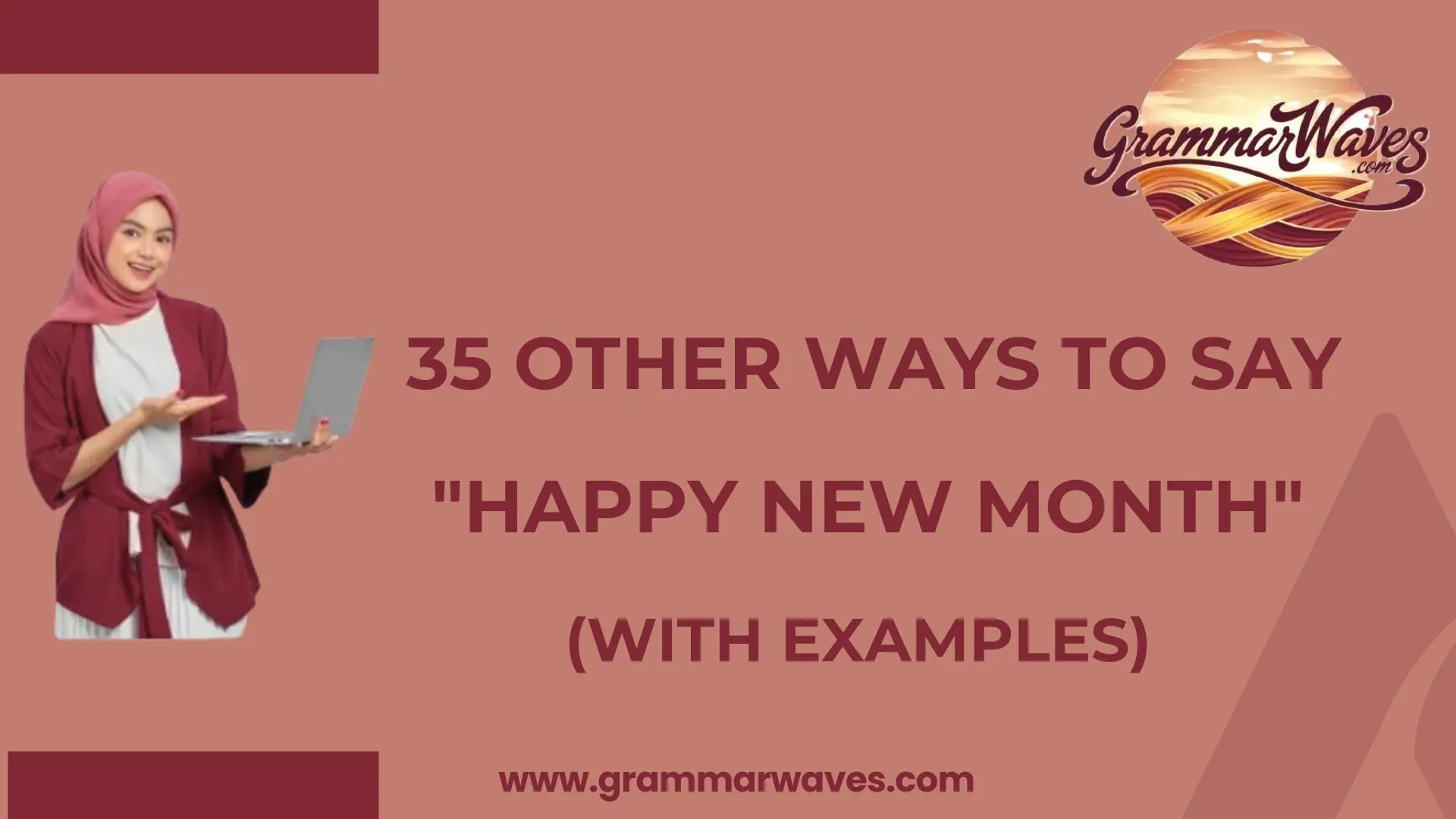When choosing the right words to reply, even a simple phrase like “Either Day Works for Me” can make a huge difference in how your message is received and valued. Adding a touch of warmth or thoughtfulness can turn a casual response into a meaningful, personal, and authentic interaction. Whether in professional emails or casual plans and invitations, using considerate, approachable, and thoughtful language helps your communication sound genuine and inviting.
Exploring alternatives beyond the standard reply gives you flexibility. Avoid repetitive messages by offering a variety of choices that communicate openness. Carefully crafting phrases for personal or professional exchanges ensures your messages stand out, remain natural, and feel aligned with your style, creating an engaging, meaningful experience for the recipient.
What Does “Either Day Works for Me” Mean?
“Either Day Works for Me” is a way to express flexibility and willingness regarding scheduling. It tells the other person that you are open to multiple options and that their preference will guide the decision. This phrase conveys cooperation and understanding, making it ideal for personal and professional contexts.
When to Use “Either Day Works for Me”
Use this phrase when:
- You want to show flexibility in scheduling meetings or social plans.
- You wish to avoid imposing your preference on someone else.
- You want to communicate politeness and cooperation.
Is It Professional/Polite to Say “Either Day Works for Me”?
Yes! It is both professional and polite, as it signals that you are accommodating and considerate of the other person’s schedule. Just ensure your tone matches the context-slightly casual for friends and more formal for business correspondence.
Pros and Cons of Saying “Either Day Works for Me”
Pros:
- Shows flexibility
- Non-confrontational
- Easy and quick to communicate
Cons:
- Can be overused, sounding generic
- It might seem non-committal if over-relied upon
- Less expressive or engaging than alternatives
Either Day Works for Me Synonyms:
- I’m Flexible on the Date
- Any Day Is Fine
- I Can Make Either Date Work
- I’m Good With Both Dates
- Whichever Date Works Best for You
- I’m Open to Either Day
- Either Option Works for Me
- I Can Do Both Days
- Both Dates Are Fine With Me
- I’m Happy to Go With Either
- I’m Fine With Either Option
- Either Day Is Perfect
- Both Days Work for Me
- I Can Adjust to Either Day
- I’m Comfortable With Either Date
- I’m Happy With Either
- Any Date Works for Me
- I Can Go With Either
- Either Works for Me
- I’m Open to Any Date
- Whichever Works Best for You
- I’m Good Either Way
- I’m Available Both Days
- Both Options Are Good
- Either Date Is Fine With Me
- I’m Happy to Fit Either Date
- Either Works for My Schedule
- I’m Ready for Either
- Either Date Is Okay
- I’m Content With Either
- Either Date Fits My Schedule
- I Can Work With Either
- I’m Available Either Day
- I’m Good With Either Day
- I’m Open Either Way
I’m Flexible on the Date
Meaning:
Expresses openness to any chosen date.
Explanation:
Indicates that your schedule can accommodate the other person’s preference without pressure.
Example:
“I’m flexible on the date, so whatever works best for you.”
Best Use:
Professional emails or casual invites where consideration is key.
Worst Use:
When your schedule is actually limited, it may be confusing.
Tone:
Polite, considerate, and neutral.
Any Day Is Fine
Meaning:
Shows willingness to agree with the other person’s choice.
Explanation:
A casual and simple way to indicate that all options are acceptable.
Example:
“Any day is fine, just let me know what suits you.”
Best Use:
Friendly messages, team planning, casual arrangements.
Worst Use:
Formal emails require more professional phrasing.
Tone:
Relaxed, easygoing, approachable.
I Can Make Either Date Work
Meaning:
Communicates active adaptability to scheduled dates.
Explanation:
Shows you are willing to adjust your plans for the convenience of others.
Example:
“I can make either date work, so choose whichever is easier for you.”
Best Use:
Professional and casual contexts require coordination.
Worst Use:
Overuse may dilute your decisiveness.
Tone:
Accommodating, professional, friendly.
I’m Good With Both Dates
Meaning:
A simple affirmation of being okay with either option.
Explanation:
Conveys ease and willingness, without elaboration.
Example:
“I’m good with both dates, so whichever fits your schedule.”
Best Use:
Quick replies or informal communications.
Worst Use:
When a formal tone is expected.
Tone:
Casual, friendly, agreeable.
Whichever Date Works Best for You
Meaning:
Places the decision in the other person’s hands.
Explanation:
Signals respect for the other person’s preference or convenience.
Example:
“Whichever date works best for you, I’ll adjust accordingly.”
Best Use:
Professional emails or polite personal messages.
Worst Use:
If overused, it may seem non-committal.
Tone:
Polite, thoughtful, accommodating.
I’m Open to Either Day
Meaning:
Indicates availability and willingness for multiple options.
Explanation:
Shows neutrality and cooperation, letting the other person decide.
Example:
“I’m open to either day, just let me know what suits you.”
Best Use:
Scheduling meetings or social events with flexibility.
Worst Use:
If your availability is actually limited.
Tone:
Neutral, professional, approachable.
Either Option Works for Me
Meaning:
Communicates indifference to the choice, signaling cooperation.
Explanation:
Confirms you can adapt to any proposed choice.
Example:
Either option works for me; pick the one that’s easiest for you.”
Best Use:
Friendly or professional contexts need concise clarity.
Worst Use:
Formal documents require precise commitments.
Tone:
Neutral, agreeable, flexible.
I Can Do Both Days
Meaning:
Shows active availability for multiple dates.
Explanation:
Let the other person know you have no constraints.
Example:
“I can do both days, so let me know what works best.”
Best Use:
Team scheduling, casual meetings.
Worst Use:
Overused in professional emails without polished phrasing.
Tone:
Friendly, cooperative, approachable.
Both Dates Are Fine With Me
Meaning:
Indicates acceptance of either option.
Explanation:
Reassures the other party that they can choose freely.
Example:
“Both dates are fine with me; please choose what suits your calendar.”
Best Use:
Neutral, friendly, or professional communication.
Worst Use:
When a specific commitment is required.
Tone:
Polite, neutral, flexible.
I’m Happy to Go With Either
Meaning:
Communicates positive flexibility.
Explanation:
Shows that you are content with any of the proposed options.
Example:
“I’m happy to go with either day, whatever works best for you.”
Best Use:
Friendly, considerate communication.
Worst Use:
Not ideal in formal or contract-based scheduling.
Tone:
Warm, friendly, accommodating.
I’m Fine With Either Option
Meaning:
Shows willingness to accept any proposed choice.
Explanation:
A simple and approachable way to indicate flexibility without overexplaining.
Example:
“I’m fine with either option, so you can decide which is better.”
Best Use:
Casual or professional settings where brevity is appreciated.
Worst Use:
When you need to sound formally committed.
Tone:
Neutral, polite, agreeable.
Either Day Is Perfect
Meaning:
Expresses positive acceptance of either day.
Explanation:
Indicates that you are not only available but also pleased with either option.
Example:
“Either day is perfect; just let me know which works for you.”
Best Use:
Friendly, casual, or semi-formal contexts.
Worst Use:
Overly casual for formal business emails.
Tone:
Warm, enthusiastic, flexible.
Both Days Work for Me
Meaning:
Indicates both options are workable.
Explanation:
A straightforward way to show practical flexibility.
Example:
“Both days work for me, feel free to choose whichever fits best.”
Best Use:
Neutral professional or casual communications.
Worst Use:
Overused phrasing may seem uninspired.
Tone:
Polite, cooperative, simple.
I Can Adjust to Either Day
Meaning:
Shows active willingness to adapt.
Explanation:
Signals that you are willing to rearrange your schedule if needed.
Example:
“I can adjust to either day, so pick whichever is easiest for you.”
Best Use:
Meetings with colleagues, scheduling appointments.
Worst Use:
When your schedule is actually tight, it may cause miscommunication.
Tone:
Professional, accommodating, thoughtful.
I’m Comfortable With Either Date
Meaning:
Conveys ease and readiness to accept either choice.
Explanation:
Suggests you are unbothered by the choice and respect others’ preferences.
Example:
“I’m comfortable with either date, whichever fits your calendar better.”
Best Use:
Emails, team planning, casual invites.
Worst Use:
Overly informal for high-level professional correspondence.
Tone:
Neutral, polite, flexible.
I’m Happy With Either
Meaning:
Shows positive flexibility and approval.
Explanation:
Demonstrates that you are content with any option and want to be cooperative.
Example:
“I’m happy with either, so you can pick the day that works best.”
Best Use:
Friendly messages, informal professional communication.
Worst Use:
Formal contexts need precise commitment.
Tone:
Warm, agreeable, accommodating.
Any Date Works for Me
Meaning:
Expresses total flexibility with scheduling.
Explanation:
Indicates that your schedule is open and you are ready to go along with the other person’s choice.
Example:
“Any date works for me; just let me know which you prefer.”
Best Use:
Informal or professional settings requiring quick coordination.
Worst Use:
May appear non-committal if overused.
Tone:
Neutral, cooperative, approachable.
I Can Go With Either
Meaning:
Shows willingness to accept any option.
Explanation:
Communicates adaptability and flexibility in scheduling.
Example:
“I can go with either day, so pick whichever is easiest for you.”
Best Use:
Casual conversations or team scheduling.
Worst Use:
Formal contexts where polished language is expected.
Tone:
Friendly, adaptable, neutral.
Either Works for Me
Meaning:
A concise way to express flexibility.
Explanation:
Signals that you have no preference, and the choice is entirely up to the other person.
Example:
“Either works for me, so just let me know your preference.”
Best Use:
Quick replies or casual planning.
Worst Use:
Overly brief for formal professional communication.
Tone:
Simple, neutral, cooperative.
I’m Open to Any Date
Meaning:
Conveys availability and readiness to fit the other person’s schedule.
Explanation:
Suggests adaptability and willingness to accommodate preferences.
Example:
“I’m open to any date, so you can choose what’s most convenient.”
Best Use:
Professional meetings, casual scheduling.
Worst Use:
When specific timing is required.
Tone:
Polite, professional, flexible.
Whichever Works Best for You
Meaning:
Hand the decision to the other person politely.
Explanation:
Shows consideration and respect for others’ schedules.
Example:
“Whichever works best for you is fine with me.”
Best Use:
Professional or friendly emails where an accommodating tone is needed.
Worst Use:
If you need to show a clear preference for one option.
Tone:
Thoughtful, polite, cooperative.
I’m Good Either Way
Meaning:
Informal affirmation of flexibility.
Explanation:
Suggests that both options are acceptable, without emphasizing one.
Example:
“I’m good either way, so go with what’s easier for you.”
Best Use:
Casual conversations, team chats.
Worst Use:
Formal communication that requires clear scheduling commitment.
Tone:
Casual, friendly, neutral.
I’m Available Both Days
Meaning:
Communicates clear availability for either day.
Explanation:
Provides reassurance that you can attend or meet regardless of the day chosen.
Example:
“I’m available both days, so choose whichever works best for you.”
Best Use:
Professional settings where availability matters.
Worst Use:
Informal situations where overly formal phrasing feels stiff.
Tone:
Neutral, professional, accommodating.
Both Options Are Good
Meaning:
Signals acceptance and readiness.
Explanation:
Let the other person know that either choice is suitable.
Example:
“Both options are good, so pick whichever fits your schedule.”
Best Use:
Team discussions, casual planning.
Worst Use:
Overly casual in formal professional contexts.
Tone:
Friendly, agreeable, flexible.
Either Date Is Fine With Me
Meaning:
Indicates comfort and flexibility.
Explanation:
Shows willingness to accept any option without difficulty.
Example:
“Either date is fine with me, so you decide what works best.”
Best Use:
Emails, friendly scheduling, casual professional communication.
Worst Use:
When precision or commitment is required.
Tone:
Polite, neutral, flexible.
I’m Happy to Fit Either Date
Meaning:
Shows adaptability and positive acceptance.
Explanation:
Suggests you are willing to coordinate based on the other’s preference.
Example:
“I’m happy to fit either date, just let me know which one you prefer.”
Best Use:
Professional or friendly emails.
Worst Use:
When your schedule is actually limited, it could cause issues.
Tone:
Warm, accommodating, thoughtful.
Either Works for My Schedule
Meaning:
Communicates flexibility while considering your own availability.
Explanation:
Signals openness to either option within your schedule constraints.
Example:
“Either works for my schedule; feel free to pick.”
Best Use:
Professional or semi-formal messages.
Worst Use:
Casual contexts where simple phrasing is sufficient.
Tone:
Neutral, professional, polite.
I’m Ready for Either
Meaning:
Shows preparedness and flexibility.
Explanation:
Conveys you are fully available and cooperative.
Example:
“I’m ready for either, so just tell me your preference.”
Best Use:
Meetings, appointments, or informal scheduling.
Worst Use:
Overly casual for highly formal correspondence.
Tone:
Friendly, accommodating, flexible.
Either Date Is Okay
Meaning:
Simple expression of acceptability.
Explanation:
Communicates that you have no objection to either choice.
Example:
“Either date is okay; whichever is convenient for you works.”
Best Use:
Informal emails or messages.
Worst Use:
Professional contexts that need polished phrasing.
Tone:
Neutral, approachable, casual.
I’m Content With Either
Meaning:
Conveys satisfaction with any option.
Explanation:
Signals that you are agreeable and cooperative, regardless of choice.
Example:
“I’m content with either, so pick the day that suits you best.”
Best Use:
Friendly messages, informal planning.
Worst Use:
Overly casual in formal professional emails.
Tone:
Polite, warm, agreeable.
Either Date Fits My Schedule
Meaning:
Indicates compatibility of your schedule with both options.
Explanation:
Shows that either option is manageable for you.
Example:
“Either date fits my schedule; choose what works for you.”
Best Use:
Professional meetings or casual arrangements.
Worst Use:
If your schedule is actually restricted, this could be misleading.
Tone:
Neutral, professional, flexible.
I Can Work With Either
Meaning:
Expresses adaptability and cooperation.
Explanation:
Suggests willingness to adjust and participate regardless of the choice.
Example:
“I can work with either, so feel free to decide.”
Best Use:
Professional scheduling, friendly coordination.
Worst Use:
Overused casually, sounding non-committal.
Tone:
Neutral, accommodating, cooperative.
I’m Available Either Day
Meaning:
Clear statement of availability.
Explanation:
Communicates that you are free to attend on either of the proposed dates.
Example:
“I’m available either day; whichever works best for you.”
Best Use:
Professional or casual settings need confirmation of availability.
Worst Use:
Informal settings where simpler phrases suffice.
Tone:
Polite, neutral, flexible.
I’m Good With Either Day
Meaning:
Expresses general acceptance.
Explanation:
Shows flexibility without specifying preference.
Example:
“I’m good with either day, pick the one that works best for you.”
Best Use:
Friendly or casual communication.
Worst Use:
Professional emails that need polished phrasing.
Tone:
Casual, approachable, agreeable.
I’m Open Either Way
Meaning:
Indicates flexibility and neutrality.
Explanation:
Conveys openness to either option, leaving the choice to the other person.
Example:
“I’m open either way, so go with whatever suits you.”
Best Use:
Informal or professional coordination.
Worst Use:
When decisiveness is required.
Tone:
Neutral, accommodating, polite.
Final Thoughts
Finding the perfect way to say “Either Day Works for Me” is more than a matter of grammar-it’s about conveying consideration, flexibility, and thoughtfulness. The phrases we choose reflect how much we value the other person’s time and preferences. By exploring 35 alternative expressions, you can communicate openness in ways that feel warm, personal, and professional.
Whether you’re sending a casual text to a friend or scheduling an important meeting with colleagues, the alternatives help you match your tone to the context. Some phrases are casual and friendly, like “I’m good with either day”, while others are more polished, such as “Whichever works best for you”, making them suitable for formal emails.
Using these alternatives also prevents your communication from feeling stale or generic, adding personality to your scheduling messages. Thoughtful phrasing demonstrates empathy and respect, making interactions smoother and more pleasant. Flexibility isn’t just about availability-it’s a reflection of cooperation, attentiveness, and emotional intelligence.
Ultimately, having a variety of ways to express that you’re flexible allows you to adapt to every situation with ease. It shows that you’re considerate of others’ needs and capable of maintaining graceful communication in both personal and professional contexts. Mastering these alternatives ensures that your messages are clear, polite, and positively received, leaving a lasting impression of thoughtfulness.
FAQs
What does “Either Day Works for Me” mean?
It indicates flexibility and willingness to schedule on either proposed days. It shows you are cooperative and accommodating, allowing the other person to choose a time that suits them best.
Is it professional to say “Either Day Works for Me”?
Yes, it is polite and professional, especially in emails or meetings. It communicates flexibility without imposing your preference, which is valued in professional settings.
How can I make it sound more thoughtful?
Use alternatives like “Whichever works best for you” or “I’m happy to fit either date”. These convey care and attentiveness, making your message warmer and more personal.
When should I avoid using this phrase?
Avoid it if your schedule is actually limited, or in situations requiring specific commitment, as it can appear non-committal or unclear.
Can I use these alternatives in both casual and professional settings?
Yes! Many alternatives are versatile. Casual options like “I’m good with either day” suit friends, while formal ones like “Either works for my schedule” fit professional emails or meetings.

Hi, I’m Amelia Carter, the voice behind Grammarwaves.com. With years of experience in grammar, writing, and clear communication, I have created this site’s content to help people understand English in an easy way. Whether you’re a student, a professional, or just someone who loves language, my goal is to make tricky grammar rules simple and practical.
